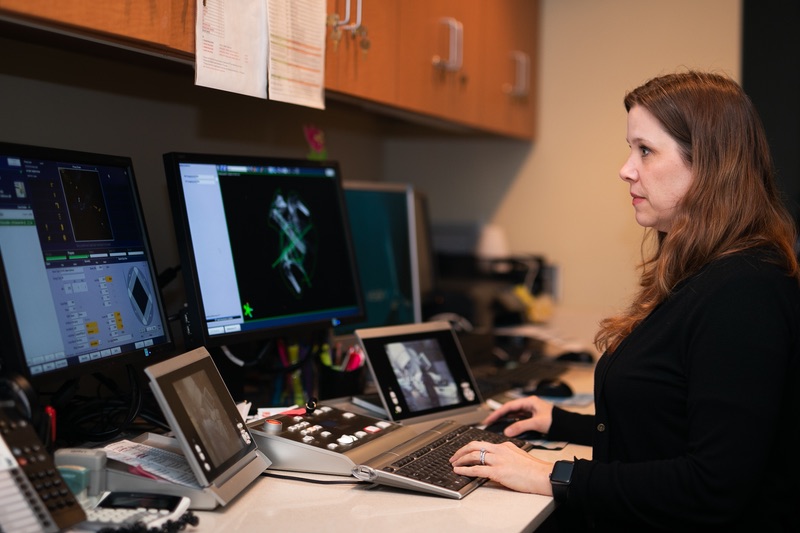
If you or a loved one recently received a breast cancer diagnosis, you might be wondering what comes next. Many patients with breast cancer are treated with radiation therapy at some point during the treatment plan. For most, radiation therapy is given externally, but some women receive radiation inside the breast. What’s the difference between internal and external radiation therapy and how is the decision made about which is right for the patient?
What is Radiation Therapy?
Radiation, when carefully administered to the specific area where cancer cells are located, is proven to destroy cancer cells and/or prevent their future growth. The goal is to destroy the cancer while minimizing damage to organs and tissue that’s located near the area being treated.
There are several types of radiation therapy. The right one for each patient is based on the size of the tumor and its location in the breast.
Types of Radiation Therapy Used For Breast Cancer
There are primarily two types of radiation therapy used to treat breast cancer.
External Beam Radiation Therapy
External beam radiation therapy is the most common radiation therapy used to treat breast cancer. Most people who have a lumpectomy will have radiation therapy treatments after surgery to be sure all of the cancer cells are gone.
The patient lies down on a table under the linear accelerator used to deliver the radiation. Care is taken to be sure you’re in the very same position during every treatment session so that the same area receives the necessary treatments.
For breast cancer patients the radiation is often directed at the site of surgery, lymph nodes, the chest wall, and any areas where there may be drains after surgery.
External beam radiation therapy for breast cancer is usually given 5 days a week for several weeks. With the recent introduction of hypofractionated radiation therapy, treatments can be completed in about 4-5 weeks. With hypofractionated radiation therapy, a larger daily dose is delivered in each session over a period of fewer weeks compared to standard radiation which typically lasts 6-8 weeks.
Learn more about what to expect during external radiation for breast cancer.
Internal Radiation Therapy for Breast Cancer
Internal radiation, or brachytherapy, is a type of radiation given through applicators inside the body. This is considered high-dose rate radiation therapy, also referred to as HDR, it usually lasts a week or less.
For patients who have very early-stage cancer and had a lumpectomy to remove it, breast brachytherapy may be an option. An applicator is placed in the breast so that radioactive seeds or pellets can be placed inside. The applicators are pointed carefully at the area where the cancer was located. Over the course of a few days, the radioactive seeds will be placed in the applicator tubes and left there for a short period of time.
When is Radiation Therapy Used to Treat Breast Cancer?
The radiation oncologist will work with the medical oncologist and breast cancer surgeon to determine the right timing of all the treatments including radiation therapy.
Some patients may need radiation therapy before surgery to shrink the tumor. Some patients receive it only after a lumpectomy. And other patients receive it to treat breast cancer that has grown in other areas of the body.
Questions to Ask Your Breast Cancer Care Team
After you and your cancer care team, which includes the radiation and medical oncologists and the surgeon, have discussed which type of treatment for breast cancer you will receive, make sure you take diligent notes and ask specific questions. Your radiation oncologist is specifically there to help deliver the radiation treatments and help reduce the side effects of treatment.
Communicating with your team as you progress through treatment makes a big difference in your quality of life. These discussions can help keep your radiation oncologist, medical oncologist, and surgeon involved with you in decisions about treatment, timing, and the order in which you receive them.
You’ll also want to be sure you consider where you’ll receive your radiation therapy. The visits to the cancer center will be daily for several weeks so be sure you discuss where you’ll receive treatments and make sure you know how far that is from your home.
Radiotherapy Clinics of Georgia is dedicated to caring for your breast cancer patients in the greater Atlanta area. Find a location near you to schedule a consultation with the team so you can discuss your radiation therapy treatment plan.



